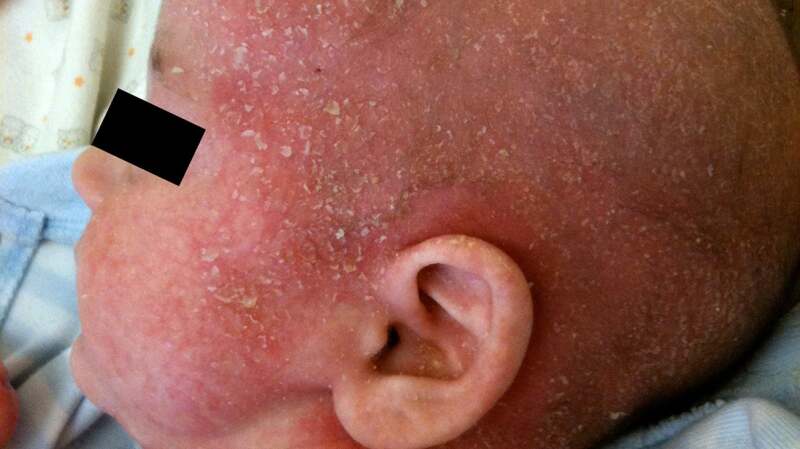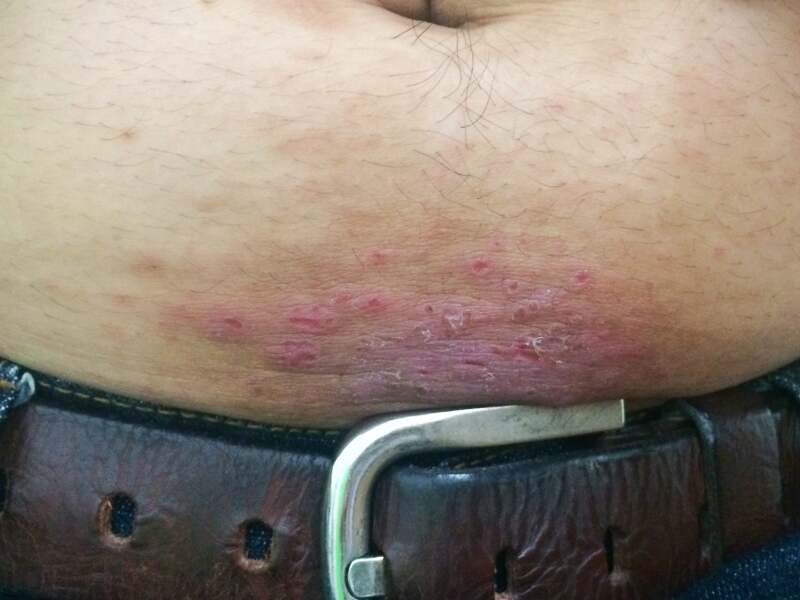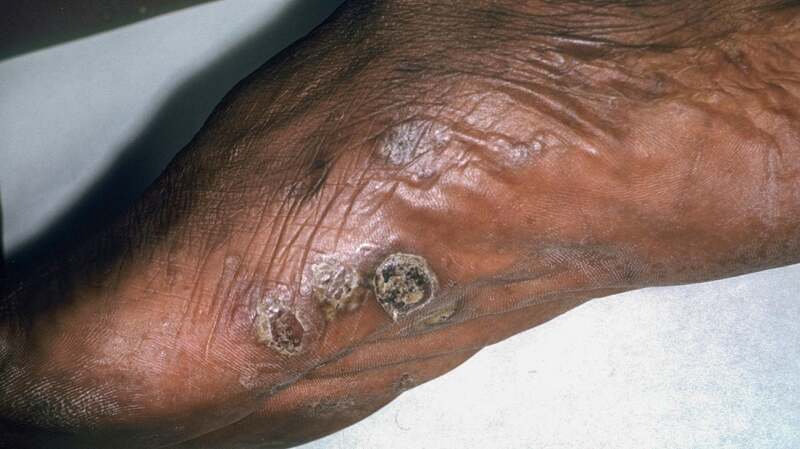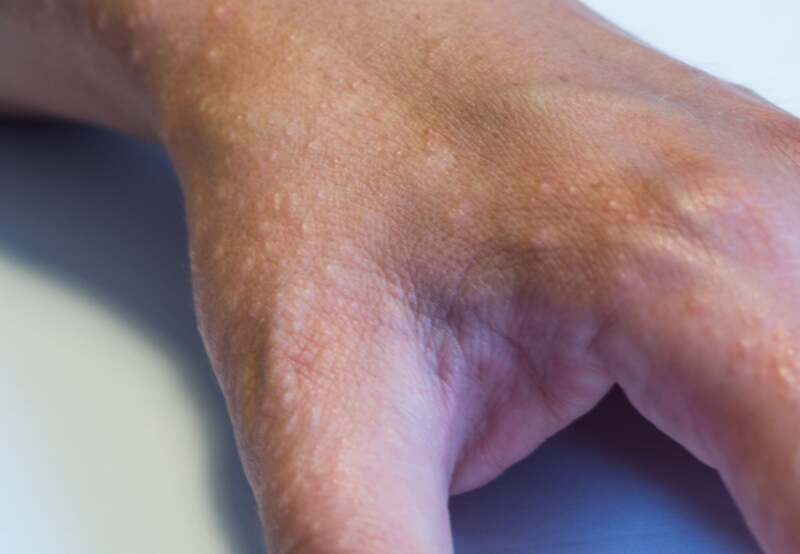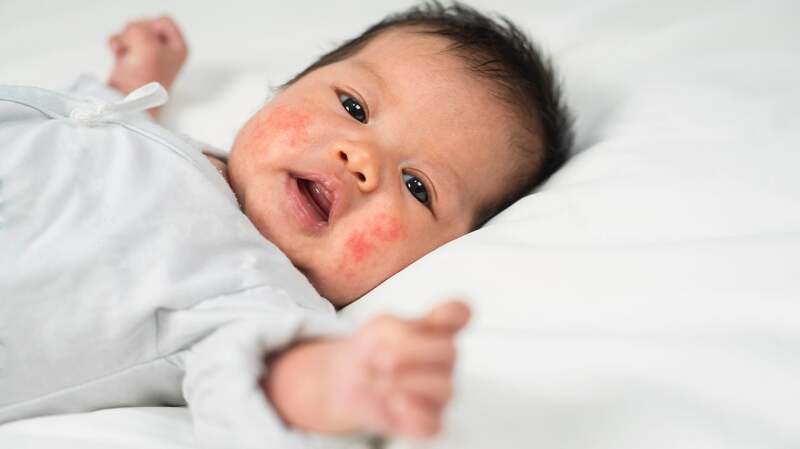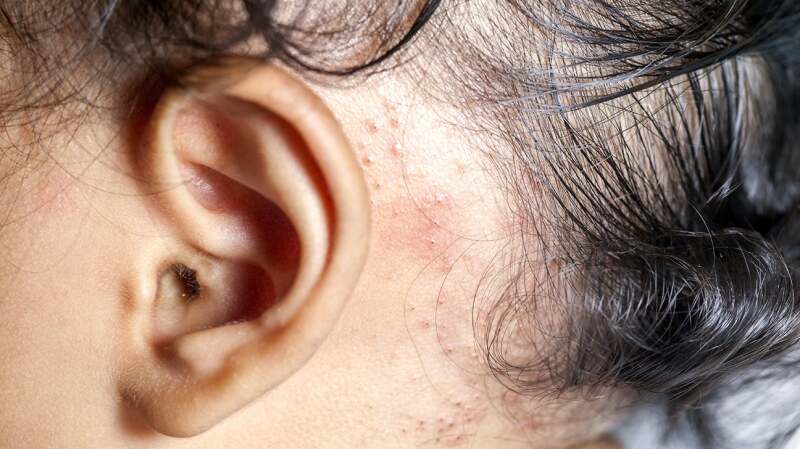This article shows what eczema can look like on various locations of the body and people of different ages.
What does eczema look like?
Eczema can look like:
- a rash of dry or scaly skin, sometimes in large patches
- discolored or flushed skin
- blisters that may later weep fluid or blood
- a bumpy rash that appears like goosebumps
- thickened skin
- wrinkling or emphasis of skin lines
- skin infection symptoms, such as pus filled bumps or crusts
However, each eczema type may present slightly differently. The following explains what different types of eczema may look like.
Atopic dermatitis
Atopic dermatitis can begin as itchy skin that develops into a rash. Sometimes, it causes red, gray, or violet-brown discolored spots on the skin.
Atopic dermatitis can cause rashes to develop in different areas depending on the age at which it begins. For example:
- Infants commonly experience atopic dermatitis on their cheeks or scalp.
- Older children might experience it on their legs, wrists, or neck or in areas with skin folds, such as between the buttocks.
- Adults often develop atopic dermatitis on the face, eyelids, neck, and hands.
Contact dermatitis
Contact dermatitis can develop because of skin irritation or an allergic reaction. It can cause itchy hives, round welts, and fluid-filled blisters that ooze and leave crusts or scales.
It commonly appears on:
- the hands
- the face and neck
- the underarms
- the scalp
- the tops of the feet
Dyshidrotic eczema
Dyshidrotic eczema develops only on the hands, feet, or both at the same time.
In addition to other symptoms of eczema, dyshidrotic eczema may cause:
- tiny fluid-filled blisters that itch
- symptoms that worsen after sweating
- dark spots where the blisters used to be
- blisters on the palms of the hands that may open up and peel
Neurodermatitis
Neurodermatitis commonly occurs on:
- the back of the neck
- the scalp
- the arms
- the groin and genitals
It typically causes thick and itchy patches of skin, known as lichenified skin. These patches may appear leathery and have red, brown, or grayish discoloration.
Neurodermatitis can also cause:
- breakage or loss of hair
- scarring
- open sores after scratching
Nummular dermatitis
Nummular dermatitis can cause:
- raised, round, or oval spots on the skin that may grow together to form larger patches
- itchiness
- small spots or blisters
- spots that may be brown on dark skin tones or pink or red on light skin tones
- spots that appear lighter or darker than the unaffected skin
Stasis dermatitis
Stasis dermatitis can result from poor blood flow in the lower legs, also known as venous insufficiency. Other symptoms of stasis dermatitis include:
- swelling that may resolve during sleep but then return
- swelling on the inside of the ankle
- scaly skin that appears discolored and tends to affect the lower legs and feet
- hardened skin
- wounds or sores
- shrinkage of the lower part of the calf
Seborrheic dermatitis
Seborrheic dermatitis can cause:
- scaly patches of skin that may appear oily, moist, or thick
- pinkish or flushed patches of skin
- hypopigmented, or lighter, patches of skin on dark skin tones
- a white scale on the skin
- scales of skin that flake off
Seborrheic dermatitis is common in infants and is known as “cradle cap.”
It most often develops in areas that have high concentrations of oil glands, such as:
- the scalp
- face
- ears
- skin folds
- groin or genitals
Hand eczema or hand dermatitis
Hand eczema can look like dry skin, but it requires more treatment and may be the result of irritation.
It can have the following symptoms:
- skin that is dry or chapped
- blisters
- cracks in the skin that are deep or painful
- skin that bleeds or weeps fluid
- painful pus-filled crusts
Eczema in young children
Atopic dermatitis and seborrheic dermatitis are common in infants.
Some types of eczema may appear slightly different in children than in adults. For example, with atopic dermatitis, the rash often affects the cheeks and head of infants. Adults commonly develop a rash around the eyes.
Below are more examples of what eczema may look like in young children:
When to seek help
Contact a doctor for new or worsening skin symptoms or if treatment isn’t helping.
It’s not always possible to identify the cause of a rash without a doctor’s help, and some conditions may need medical care right away.
Call 911 or your local emergency services for anyone who has a rash and any of the following symptoms:
- a stiff neck
- sensitivity to light
- confusion
- a high temperature or chills
- difficulty breathing
- paleness or skin discoloration that is blue, gray, or blotchy
- a rash that resembles small bruises or bleeding under the skin
- a rash that does not fade when lightly pressing a glass over it
- discolored streaks on the skin
It may be easier to see discoloration on dark skin by looking at:
- the soles of the feet
- the palms of the hands
- the insides of the eyelids
- parts of the mouth, such as the lips or tongue
How to care for eczema
Before self-treating symptoms, contact a doctor.
The treatment your doctor recommends will depend on the type of eczema and whether you experience complications such as infections.
Treatment options can include:
- antihistamines to address itching
- moisturizers such as emollients, occlusives, or humectants
- medicated ointments, including:
- corticosteroids
- nonsteroidal ointments, such as pimecrolimus (Elidel), tacrolimus (Astagraf), or crisaborole (Eucrisa)
- ruxolitinib (Opzelura), a type of JAK inhibitor
- oral or injected immunosuppressant medications for severe cases of eczema
- injected biologic medications, such as dupilumab (Dupixent)
- bandaging or body suits
- light therapy
- self-care to manage irritation, such as colloidal oatmeal baths or avoiding scratching
Learn more about treatment and self-care for eczema.
Summary
Eczema typically appears as cracked, flaky, or dry skin, often with blisters or sores. The skin may look flushed or pigmented, and it can weep fluid.
However, there are different types of eczema, and all may cause various symptoms. Some eczema types may be more likely to appear on specific body areas such as hand eczema.
Contact a doctor regarding any new skin symptoms. They can make a diagnosis and recommend treatment.



